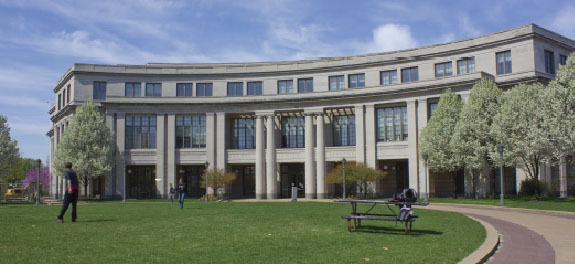When you walk into Kelvin Smith Library, the most visible component of Case Western Reserve University’s library system, everything may seem first-rate on the surface. Free color printing is available, a hot cup of coffee is only a step away, and more modern, cubicle-style seating fills spaces long occupied by tall wooden furniture.
Visitors will also find the Freedman Center and its offering of creative media services and resources, as well as study rooms for group gatherings and work sessions. Then there are the backstage attributes that often go unseen, such as KSL’s new personal librarian program for first-year students.
All of these commendable improvements are relatively new to CWRU, with the majority coming to fruition in the past three years. However, one major problem remains: by the skin of its teeth, our library has barely enough money to pay its bills.
Despite the reality that the cost of acquiring print and electronic materials is increasing at a rate of six to nine percent per year, the budget for CWRU’s library system increases, on average, two percent from year to year. In 2011, the library spent approximately $15.5 million, yet their budget for 2012 was only $13,000 higher. The culminating effect of these insufficient budget increases is a library that is barely able to maintain its current trajectory, let alone add to its collection.
In fact, the library had to cancel $550,000 worth of serials in 2011, which included the cancellation of journals and other databases. This could be problematic for the student or faculty member conducting research, since their home university may not be able to provide them with needed research materials at no added cost to them.
This is not a new problem, however, and it is not to be attributed to the staff of CWRU’s library system. According to the Association of Research Libraries “Investment Index Score,” CWRU has experienced a general decrease in the ranking of our library since 2003, falling from number 90 in that year to number 103 out of 115 institutions in 2011.
The university is currently in the midst of its strategic planning process, with staff, faculty, administrators, and a handful of students meeting regularly to discuss the direction in which the university should proceed for the foreseeable future. But in discussions dominated by the prospect of a 5,000-strong undergraduate student body, pedagogy needs to take a backseat to common sense.
Be it the residence halls or the library, the university’s administrators and funding sources need to invest in the basic elements of a good research and residential institution before focusing on other issues.
The Observer will take a closer look at this funding debacle in next week’s edition. In the meantime, if CWRU’s administration needs any instructions on how to improve a library, I do have a good book in mind. But chances are they’ll have to go to Carnegie Mellon University to find it.



